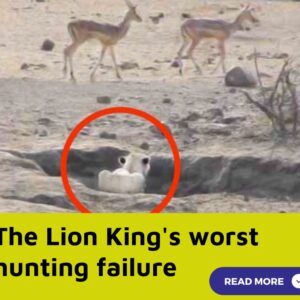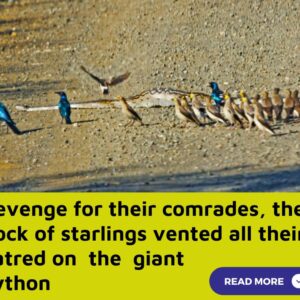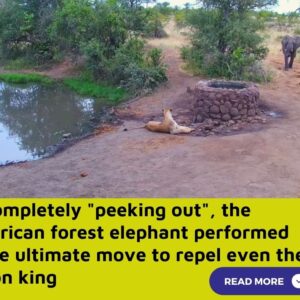Humans have sent animals into space for nearly 75 years, including all species such as monkeys, spiders, fish, cats, bacteria…

Dog Laika on board Sputnik 2 before launch in 1957.
The Soviet Union sent several dogs into space during the early years of its space program, including Laika – the first animal ever sent into Earth orbit. Laika died during this “one-way” mission. These experiments basically look pretty “crude” by today’s standards, as Laika was essentially a stray dog picked up off the street, then brought into a training center.
Before the 1957 Laika mission, the Soviet Union conducted several high-altitude animal experiments with dogs. In 1951, a dog named Smelaya ran away the day before the scheduled launch, and it is believed that it may have been eaten by wolves living in the area. Luckily, Smelaya returned the next day, and the test flight was successful. Later that year, a dog named Bobik also escaped, but this time he did not return. But the mission planners found a replacement, a dog roaming near a local pub. The team named it ZIB – an acronym for “Replacement for Missing Dog Bobik” in Russian. And here’s the classic example of hanging out at a bar one day and then finding yourself catapulted 60 miles into the air the next.

4 rats in the Discoverer 3 mission.
The first mice were launched into space in the 1950s, but these early missions often ended in disaster. In 1959, the US Air Force made a launch attempt from Vandenberg Air Force Base but then sensors failed to detect signs of life in the Discoverer 3 capsule. Four rats were found dead, because engineers used an overdose of paint to spray on their cages. The rats apparently found the paint tastier than the formula food provided.
A second launch attempt with a backup mouse team also failed, when sensors recorded 100% humidity inside the capsule. But according to NASA, because the sensors were placed under the cage, they were “unable to tell the difference between water and rat urine.” The launch was then carried out when the rat urine cloud dried. But the rocket launch failed, and the upper part with four rats crashed into the Pacific Ocean.

Young chimpanzee with trainers at Cape Canaveral launch center, Florida, USA.
Ham is the name of the first chimpanzee to fly into space, on January 31, 1961. The main goal of the Mercury-Redstone mission by NASA was to determine whether animals could perform missions in space. Ham, who was just 2 years old when he started the training, was taught how to move levers to receive rewards in the form of banana pellets and avoid punishment in the form of electric shocks to his feet. But the young chimpanzee performed excellently and completed the challenge under the lonely pressure of space as well as zero gravity.
The success of this mission set the stage for Alan Shepard, who later became the first American citizen in space in 1961. Ham then lived the rest of his life in zoos.

Félicette before the historic flight.
On October 18, 1963, the French space program launched Félicette – a Persian cat – into space. Electrodes are implanted in the cat’s skull to monitor neurological activity and trigger physical responses. And quite surprisingly, to date, Félicette is still the only cat to be successfully sent to space. It spent 15 minutes flying in orbit, at an altitude of nearly 160km, then returned safely to Earth. But after the flight, scientists gave it a “euthanasia” so they could study its brain.
In 2017, a crowdfunding campaign succeeded in building a memorial for Félicette. It is a bronze statue depicting the cat “sitting on the Earth, looking up at the sky where it once passed.” The statue is currently located at the International Space University in France.

Veterok and Ugolyok.
In February 1966, the Soviet space program sent two dogs, Veterok and Ugolyok, outside the Van Allen radiation belt to study the lingering effects of space travel as well as harmful effects. of radiation. The dogs were in space for 21 days. When they return, they are dehydrated and lose weight. Both Veterok and Ugolyok also showed signs of circulatory weakness, muscle atrophy and loss of coordination. It took them both a month to recover. These are also early signs that staying in space for a long time can cause negative health effects.

A “zoo” flew around the Moon.
During the Soviet Zond 5 mission, a series of living creatures made a historic trip around the Moon and back. Created in 1968, the “zoo” includes a pair of Steppe turtles, hundreds of fruit fly eggs, worms, plants (including dried cells from carrots, tomatoes, peas, wheat and barley), seeds, bacteria and other organisms. No living creature had ever ventured that far into space at that time, and the mission ended successfully with the capsule crashing into the Indian Ocean. The turtles were still alive when they landed on Earth. Their dissection results later showed that after “39 days of fasting”, the turtles’ main structural changes were caused by starvation, not by flight.
A similar mission was conducted later that year, but encountered an anomaly that resulted in a loss of cabin pressure and the death of all biological specimens.

The first fish flew into space.
The tiny fish, along with a litter of fish growing from embryos, were sent to space by NASA. The urchins (scientific name Fundulus heteorclitus), have shown strange swimming behavior, moving in loops in space. According to NASA, it appears that the fish respond to light (i.e. visual cues) in the absence of gravity. They were then sent to Skylab in 1973. Scientists thereby sought to study the ways in which vestibular function, which controls balance in normal gravity, could be compromised in space. time.

Arabella’s first network had problems, but the following ones did not.
In 1973, Anita and Arabella, two cross spiders (Araneus diadematus) were sent to space to spin webs. At first, both spiders struggled with zero gravity, struggling with movement and creating messy webs. But they quickly learned something and both Anita and Arabella got better at weaving after that. Everything becomes increasingly smoother and no different from works created on Earth.

C. elegans roundworms, undergoing testing on the Space Shuttle.
All seven crew members died in the space shuttle Columbia disaster in 2003. But, nematodes inside the ship’s containment tank survived the disaster. The nutrient solution they were stored within acted as a shield, as well as a container to keep them alive. The canisters containing them fell from the sky after the explosion, landing somewhere in east Texas, along with the main debris of the space shuttle. These worms then produced up to five generations, within months of the accident.

Water bears under a microscope.
Trước sự ngạc nhiên của tất cả mọi người, một nhóm gấu nước (tardigrades) đã có thể sống sót sau 10 ngày tiếp xúc với không gian mở trên vũ trụ. Thí nghiệm xảy ra vào năm 2007 trong khuôn khổ sứ mệnh FOTON-M3 của Cơ quan Vũ trụ Châu Âu. Gấu nước, vốn được biết tới là loài có khả năng sinh tồn mạnh nhất trên Trái đất, đã chứng minh khả năng này vẫn hữu ích cả ở ngoài vũ trụ. Ingemar Jönsson, trưởng dự án, cho biết: “Môi trường mở ngoài vũ trụ có thể dẫn tới mất nước và hàng loạt bức xạ độc hại, nhưng đó không phải là vấn đề đối với gấu nước”.

Một con dơi bám vào thùng nhiên liệu của Tàu con thoi vào năm 2009.
As the space shuttle Discovery prepared to launch for mission STS-119 in March 2009, controllers on the ground noticed a bat clinging to the outside of the fuel tank. Upon reviewing the images, wildlife experts believe the bat has a broken wing and is having problems with its right shoulder or wrist. Ground control staff hoped it would fly away on its own or let go, but the bat remained in place until launch. The bat’s ultimate fate is never determined, but it is fundamentally unlikely to be a happy ending.




